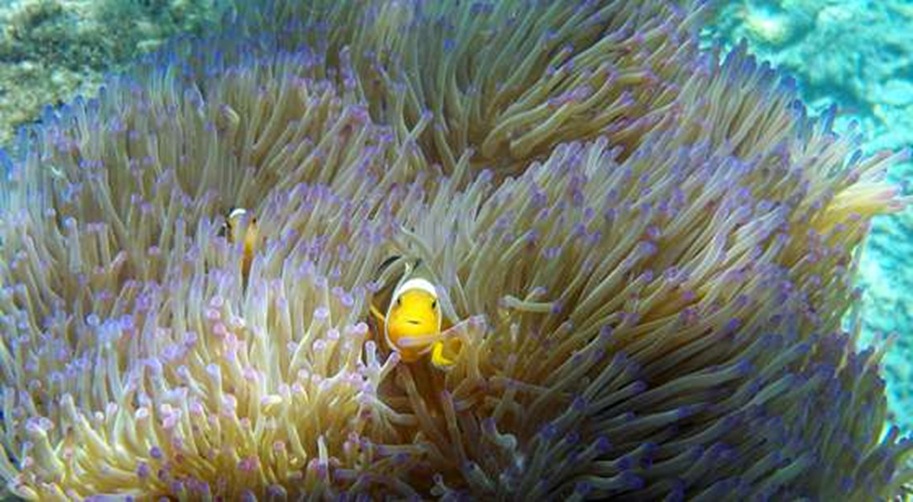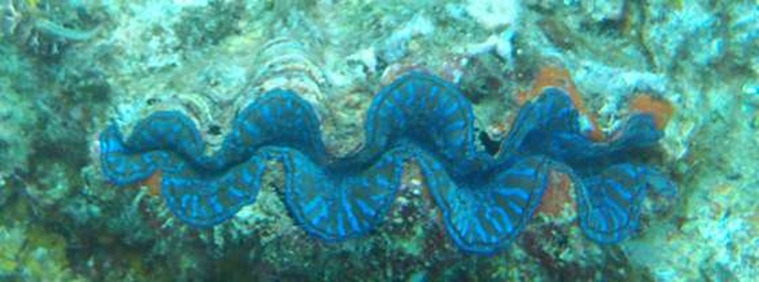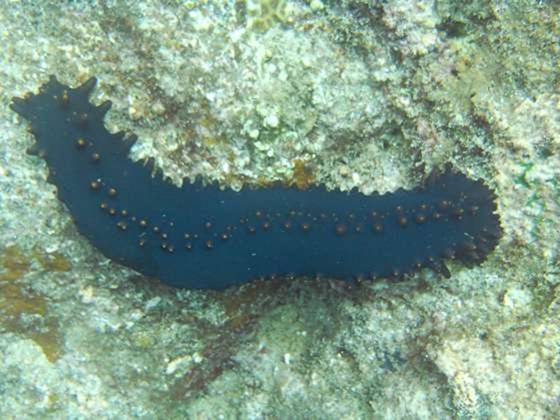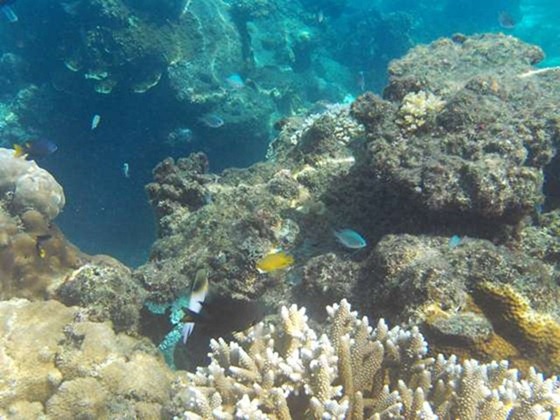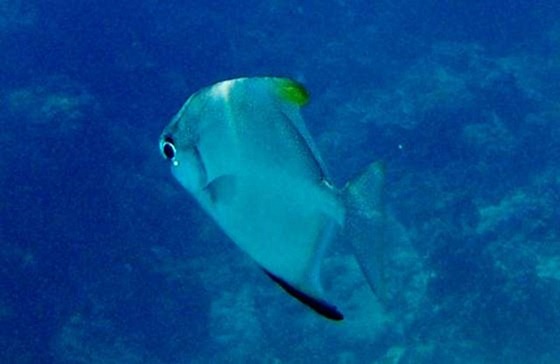Underwater in the islands of the South China Sea

|
We have been continually amazed how different this coast of peninsula Malaysia is to the west coast. Here the water is clean and clear unlike the soup of the west coast created by the silt of many rivers pouring into the Melaka Strait. The offshore islands such as Tioman, Kapas and Redang have turquoise blue waters and often the sea bed can be clearly seen through many metres of water. Consequently we have been spending a lot of the time snorkelling and here are a few underwater shots from some of the sites we’ve visited. The clown fish is one of our favourites.
They are fascinating creatures but unlike the animated ‘Nemo’, clown fish are aggressive and very territorial, the one in the photo above is in ‘back off’ mode. Due to a film of protective coating clownfish are immune to the stinging tentacles of the anemones with which they have a symbiotic relationship. They eat any dead tentacles and any debris from anemone’s feeding and help to circulate the water around their host by the flapping their tiny fins, in return the anemone’s venomous tentacles protect the clownfish from predators. They live in small groups and never stray far from their chosen anemone in case they are ousted by a stronger male. All are born males but can later change into a female fish in order to spawn, so if a female in the shoal dies, the most dominant male takes its place by changing sex.
Colourful clam. They are quite prolific on the reef and are usually completely submerged in hard coral apart from the colourful lips which can open just enough to siphon in the nutrient rich water.
Sea cucumber found just about everywhere on the reef and surrounding sand beds. They are harvested and dried and can be found in the markets as beche de mer; usually used in soups.
Healthy Reef
We haven’t been able to identify this fish so if anyone can tell us what it is please drop us an email.
On shore the islands are a mixed bag. Most have small resorts catering for local and Chinese tourists in the main. Our favourite large island was Tioman which was lightly developed, at least where we were based, and had a very pleasant village hemmed in by hills. It reminded us strongly of some of the Pacific Islands we visited. It is also a duty free island so gin at £5 a bottle! The tiny airport is right beside the town and is supposed to be one of the most dangerous in the world. The quite large aircraft have to fly directly toward the hill behind the town (marked by a large chequered red and white board) and then bank sharply at the last moment to line up the runway. At the end of the runway there is another large hill…no second goes! Of the smaller islands Kapas was our favourite with the perfect combination of a flat anchorage, a pleasant small resort with a turtle sanctuary and a friendly bar. There are many nesting beaches for the turtles in these islands but sadly the locals know them and the eggs are still taken in numbers and sold in the local markets. Many of the islands are nature reserves but policing the beaches is difficult so the damage goes on. However, there are several turtle projects, some organised and funded by University Marine Studies departments but some by devoted individuals. In either case the eggs are protected either by creating restricted beaches or by digging up and reburying the eggs in a quarantine zone. Hatchlings are usually nurtured for about six months until they are out of the vulnerable stage of early life and then released into the sea under watchful eyes. Redang is by far the most touristic island of those visited. At one anchorage there were too many high powered launches racing through the boats at 40 mph… and this a week after a woman was killed by the propeller of a launch whilst snorkelling at the island of Perhentian. There aren’t any landing pontoons for dinghies and we had a very wet arrival at one beach when a launch decided to take off at speed just as we were getting out of the dinghy. The same anchorage had a disco which had the loudest (and most rubbish) music we have heard since anchoring at Porto Santo 4 years ago. However, there are quiet parts of the island, unfortunately whilst we were there the wind was such that the noisiest harbour was best for anchoring. We cut our losses and moved on as we wanted to visit Pulau
Bidong |
